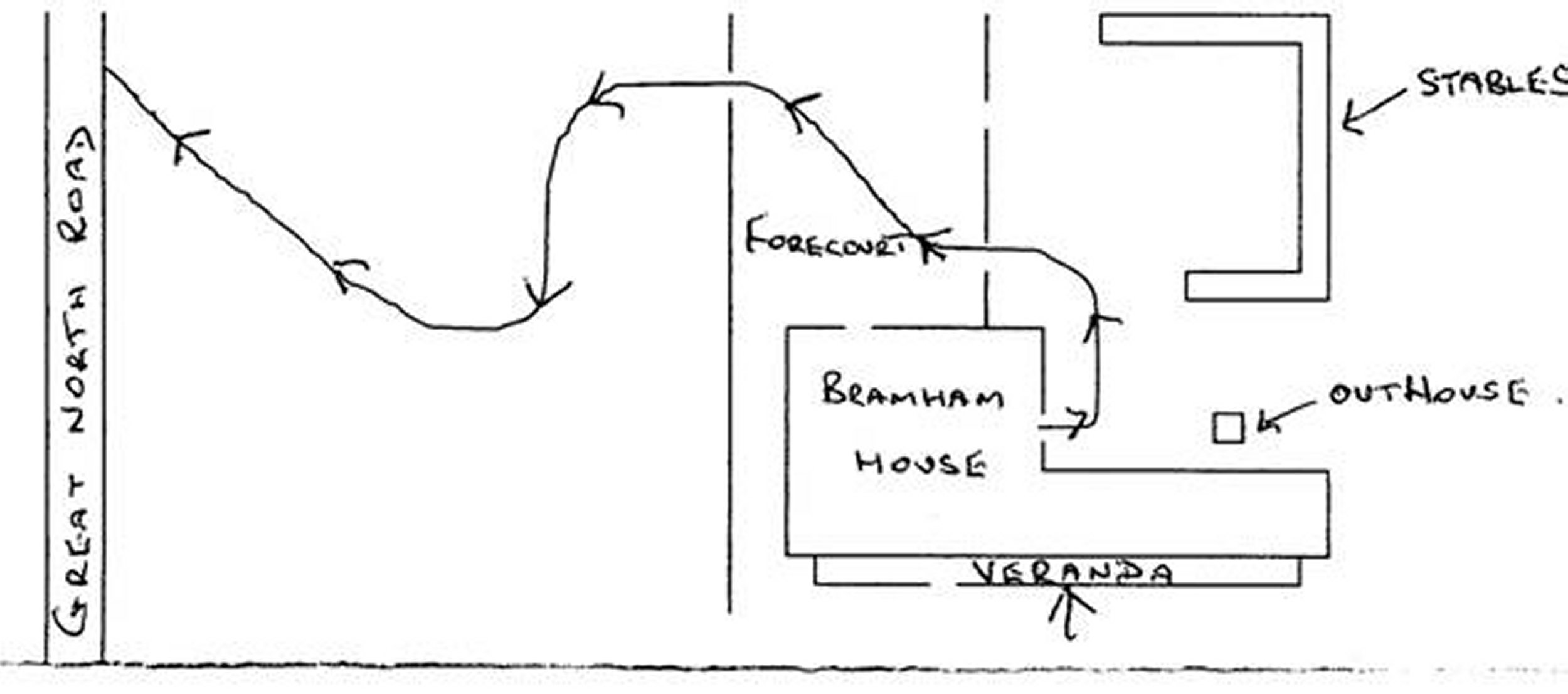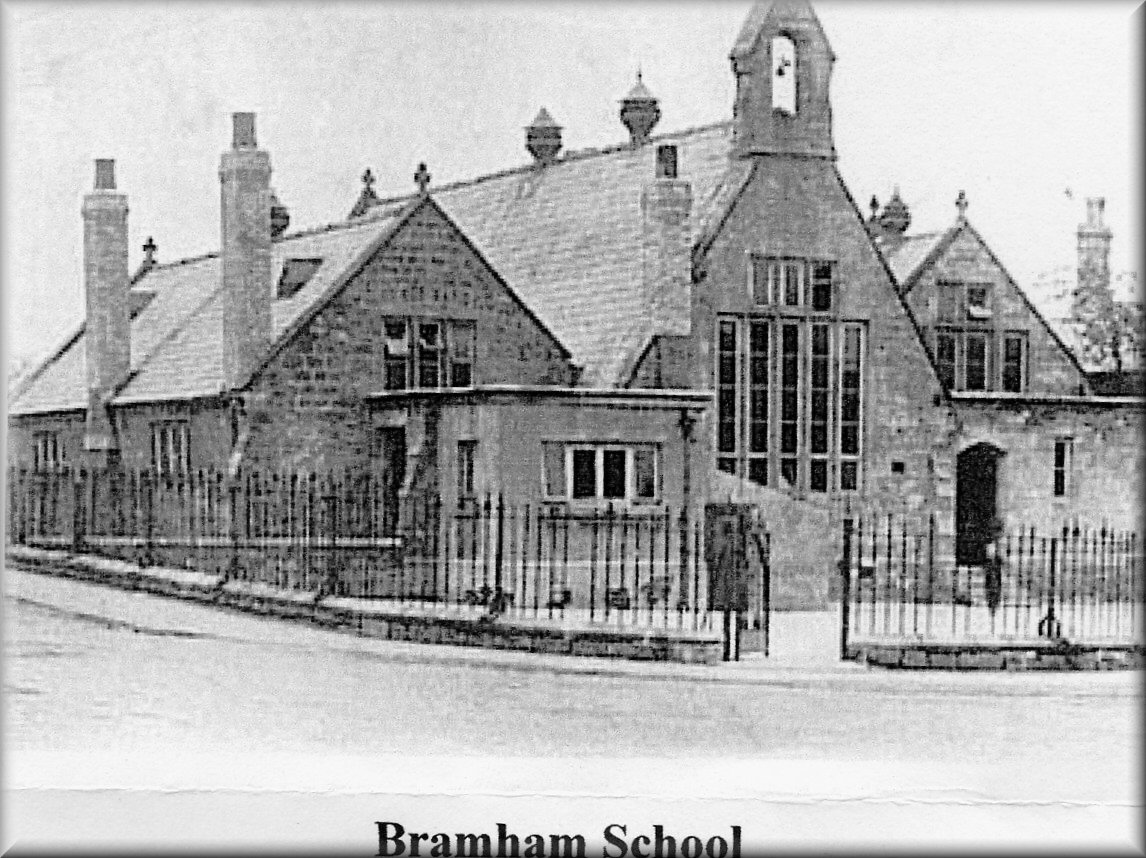Living in Bramham House |
Tom Barlows Story of his time at Bramham House
Arriving:
In the latter part of 1947 my family were taken away from our parents and admitted to the General Hospital in Pontefract. We the children were my elder brother Ronnie myself, and brother Arthur and sisters Patricia and Olive.
I cannot recall if my sisters were admitted to hospital as they would have been just a few years old, but certainly we the boys were.
Why we came to be placed in the hospital I really don't know, probably through malnutrition and neglect.
When I came out of the hospital I was taken to a children's home in Carleton for a few months before being transferred to Bramham House with my brother Arthur. Ronnie for some unknown reason was housed in Hemsworth ? which I found out at a later date and my two sisters being just 3 and 18 months of age joined Bramham House a little later.
I was probably the first resident to be admitted along with the Richardson family (John and Malcolm) and the Knowles family (Mary Joe and Marion).
My first impressions of Bramham House I imagine would have been of sheer amazement and wonder at the size of the place and how clean everything was in comparison to a run down terrace house in York Street, Pontefract.
Over the next few days/weeks the home gradually started to fill until we had the full compliment of 36 children, 18 boys and 18 girls.
Besides the aforementioned names there was Florence and Eric Jarvis, Frank and Sheila Hawksby, Denise Logg and her younger sister and Sylvia Hartley. These are the names that immediately spring to mind.
The adult carer's we came to refer to as foster mother's Miss Townsend and Miss Myers to name two of the five.
The two adults who were in charge (to put it mildly) were Mr and Mrs Holmes whom we came to know as Super and Matron; also on the staff we had Mr Dickenson (the gardener) also a game-keeper, Mrs Young the laundry women (from Back Street) and a cook.
It didn't take long before we all got to know each other and although we had our own flesh and blood as a presence, we regarded the main fold as family.
From the very beginning it was discipline and manners that were instilled in us all, very Victorian methods. Mr Holmes had recently come out of the Army after serving in the war as an officer and it was under this method that he ran the home.
Daily Routine:
The daily
routine would start with a member of staff getting you out of bed at 7am,
your bed would be inspected and then stripped, you would then turn the
mattress over and remake the bed in hospital fashion (i.e. the corners being
at 45 degree angles) following the making of the bed it was to the bathroom
where you washed and dressed.
Having done your ablutions we would go to the
playroom and await the sounding of the dining room bell calling us to form a
queue outside the dining room. Although the dining room was adjacent to the
hallway it was taboo to go to the dining room through the hallway this
being classed as a short cut and bordered as an act of laziness so one would
have to take the longer route.
|
 |
Having formed the queue in a quiet orderly fashion we were told to hold our hands out and they were inspected back and front.
The dining room consisted of nine tables with four chairs to each table and one long table for members of the staff which was placed obliquely across from the main seating area so that we the children were in full view.
On reaching ones table you had to stand behind your chair until all were assembled before taking ones seat. The food was taken from the kitchen downstairs and placed in the electric lift which then ascended to the floor above in the passageway next to the dining hall.
Always before a meal we all had to recite "For what we are about to receive may the Lord make us truly thankful".
During the meal no-one was allowed to speak at all, anyone caught talking was told to leave the table and stand in the corner with their hands on their heads, all food placed in front of you had to be consumed whether you liked it or not and always to use your right hand whether or not you were left or right handed, to use one's left hand was we were told a sign of weakness.
I myself may have been originally left handed I really don't know because today I am ambidextrous in certain things.
Once we had all finished our meal we all then recited. "For what we have received may the Lord make us truthfully thankful" .
Mrs. Holmes would now give her permission for us to vacate the dining hall and to continue with our manual tasks that we had been allocated.
The clearing of the tables was usually carried out by a couple of girls, stacking the plates and cutlery and placing them on the lift to descend its way down to the kitchen.
These were then taken from the bottom of the lift and taken through into the kitchen where they were washed dried and stacked away by other girls.
The sweeping of the dining room floor polishing it and setting the mouse traps I did many times with other boys.
Another task done by the boys was to polish all the shoes from the shoe boxes in the Ablution room. The Ablution room was where we prepared ourselves for school. It was quite a large room surrounded by bench seating which went all round the perimeter underneath of which was sectioned into thirty shoe compartments each with ones name where one would keep their shoes shoe polish and brush.
Above your shoe box was your clothes peg also marked with ones name. In the center of the room were six sinks placed back to back with a supported fixed mirror to spruce oneself up before meals and going off to school.
Daily we would have a change of clothing and socks and once they had been laundered the underclothes and socks would then be taken to the sewing room to be inspected for any repairs. The girls would do any stitching that was required but the darning to socks was done by both girls and boys.
Many was the time I would turn a sock inside out, insert the mushroom and with needle and the appropriate coloured wool repair the offending hole. A member of staff would now inform us to gather inside the passage at the back door and form a queue ready to proceed to school.
We were escorted to school in a crocodile fashion, a boy holding a girls hand. The route to school was from the back yard, past the stables across the forecourt and down the back pathway through the woods down to the Great North Road. |
 |
Bramham School:
I don't have any vivid memories of my time at Bramham School but there was an occasion when we the children were all handed Union Jacks and told to assemble on the pavement outside the school.
Some time later a large car approached from the direction of Wetherby and seated inside was the King and Queen with their two daughters Elizabeth and Margaret. What the occasion was all about I don't know, maybe a tour of the country after the war years and they happened to pass through Bramham as this was the main highway from the north to the south and vice versa at that time. The school did the occasional outings to the seaside to Cayton Bay and Whitley Bay as the newspaper photograph illustrates. |
 |
 |
After school we were collected and escorted back to the children's home by one of the staff and after changing out of school clothes we were allowed to play outside (weather permitting) or if you were detailed for a task you would continue with that.
I myself with two other boys would usually have to peel the potatoes for forty five meals (36 children plus Matron and Super and their 2 daughters and 5 staff) the girls would prepare the vegetables.
The ritual for teatime was the same for any meal, the usual prayer before and after a meal and absolute silence at all times, for ones supper it was usually bread and dripping or bread and marmite with a cup of cocoa.
If I didn't have a task to do or when completed and the weather was favorable, I would dash outside to join the other boys and play.
The grounds of Bramham House were a youngsters Aladdin's dream; you could get up to all sorts of mischief and adventure by hiding in the woods and playing Cowboys and Indians, Robin Hood and Hide and Seek etc.
This to me was a far cry from the days when my outdoor activities were spent playing on the slag heaps of the coalmine where my father worked in Pontefract, sometimes in bare feet if I didn't have any clogs, or playing chicken on the railway lines.
From the woods we became quite adept at manufacturing our own bows and arrows and also catapults, we would have competitions amongst ourselves to see who was the best shot at hitting selected targets (tongue in cheek it was usually me) so the gang would look to me as their leader.
We also built our own den which we took great pride in. As the evening drew in we would go to the playroom and await the call to go upstairs and get ready for bed after having a bath. Mr. Holmes would then go to each bedroom and recite the prayer "Teach us good Lord". There were 4 boys' bedrooms; the first one had 6 beds, the second 5 the third 2 beds and the 4th 5 beds.
There were 2 bathrooms to the boy's rooms, one between bedrooms 1 and 2 and the other at the end of the passageway just passed bedroom 4. |
 |
| Go Back |
Next Page |
|
